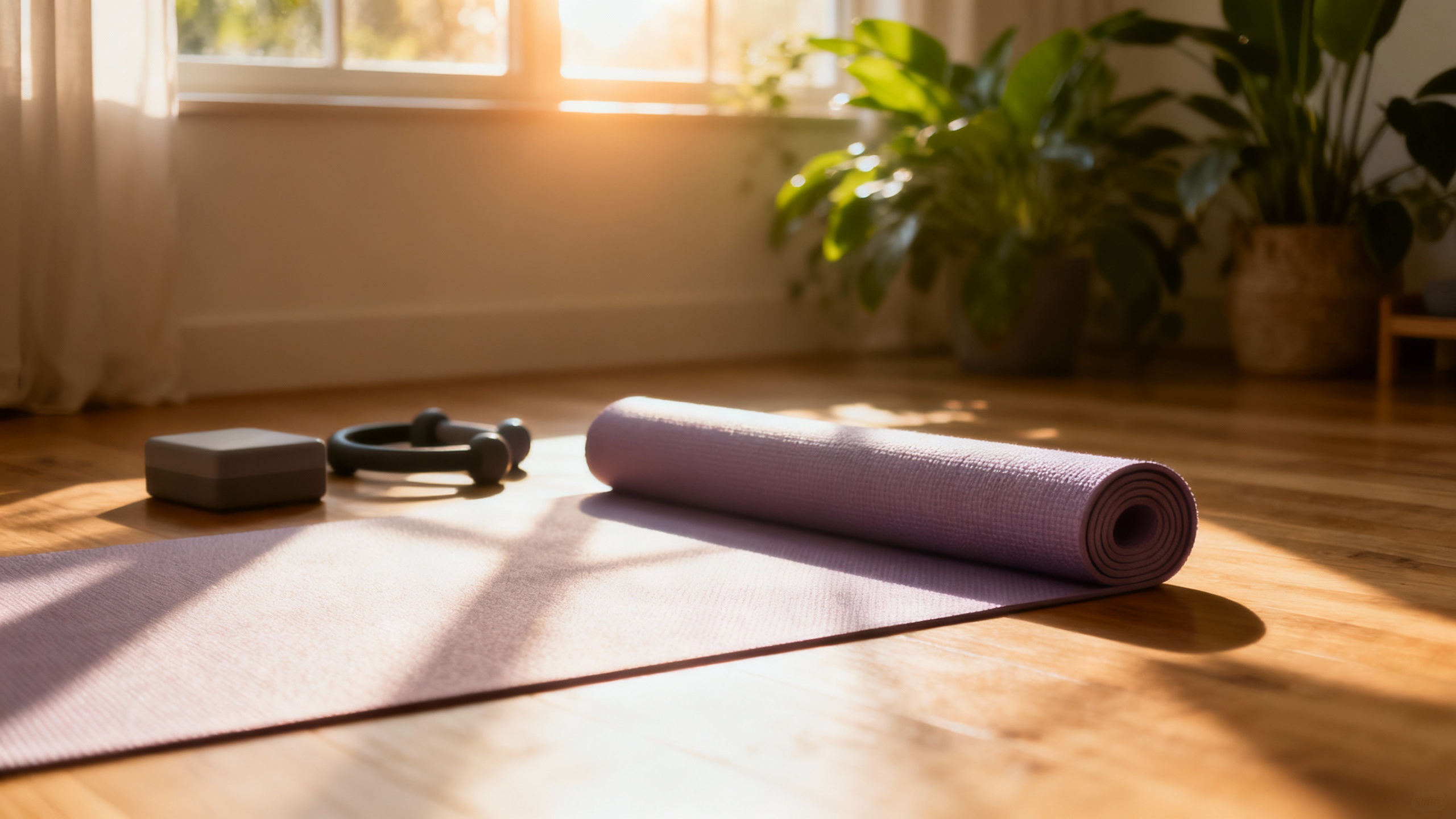Published 12 January 2024
The Healing Power: Erythema Multiforme and Exercise Recommendations

Understanding Erythema Multiforme
Erythema Multiforme is a skin condition characterized by the development of target-like rashes on the skin. It is typically an immune-mediated reaction triggered by various factors such as infections, medications, or underlying medical conditions. Understanding the nature of Erythema Multiforme and implementing appropriate management strategies are essential for individuals dealing with this condition.
What is Erythema Multiforme?
Erythema Multiforme is a skin disorder that manifests as distinctive skin lesions, which resemble targets or bulls-eye patterns. These lesions can appear on various parts of the body, including the arms, legs, face, and trunk. The exact cause of Erythema Multiforme is not fully understood, but it is believed to involve an immune system response triggered by certain stimuli. Common triggers include infections, such as herpes simplex virus or mycoplasma pneumoniae, as well as medications like antibiotics, anticonvulsants, or nonsteroidal anti-inflammatory drugs (NSAIDs).
The hallmark characteristic of Erythema Multiforme is the presence of erythematous (red) lesions with a central dark spot. These lesions may be accompanied by symptoms like itching, burning, or tenderness. In some cases, individuals may also experience systemic symptoms like fever, fatigue, or joint pain.
Managing Symptoms and Lesions
When it comes to managing Erythema Multiforme, the primary focus is on relieving symptoms, reducing inflammation, and promoting healing. Treatment options may include:
- Topical corticosteroids: These medications can help reduce inflammation and alleviate discomfort when applied directly to the affected areas of the skin.
- Oral antihistamines: These medications can help relieve itching and minimize allergic reactions associated with Erythema Multiforme.
- Pain relievers: Over-the-counter pain relievers like acetaminophen or nonsteroidal anti-inflammatory drugs (NSAIDs) can be used to manage pain and discomfort.
- Moisturizers: Regularly applying moisturizers can help soothe the skin and prevent excessive dryness or irritation.
In severe cases or when Erythema Multiforme is recurring, medical intervention may be necessary. This may involve the use of systemic corticosteroids or other immunosuppressive medications to reduce inflammation and control the immune response.
It is important for individuals with Erythema Multiforme to consult with a healthcare professional for an accurate diagnosis and appropriate treatment plan. The healthcare provider can assess the severity of the condition and recommend the most suitable treatment options based on individual needs.
By understanding the nature of Erythema Multiforme and managing symptoms and lesions effectively, individuals can find relief and improve their quality of life.
The Relationship Between Erythema Multiforme and Exercise
When it comes to managing erythema multiforme, it’s important to consider the impact of exercise on this immune-mediated skin condition. While exercise is generally beneficial for overall health and well-being, individuals with erythema multiforme need to exercise caution and make certain adjustments to their routine. Let’s explore the impact of exercise on erythema multiforme and the exercise recommendations for individuals with this condition.
Impact of Exercise on Erythema Multiforme
Regular exercise has various benefits, such as improving cardiovascular health, boosting mood, and promoting overall fitness. However, for individuals with erythema multiforme, certain types of exercise and excessive physical exertion can potentially trigger flare-ups or exacerbate existing symptoms. The increased body temperature, sweating, and friction associated with intense exercise can lead to skin irritation and inflammation.
It’s crucial for individuals with erythema multiforme to be mindful of their body’s responses during and after exercise. Pay attention to any signs of increased skin redness, itching, or discomfort. If these symptoms worsen or persist, it may be necessary to modify the exercise routine or seek medical advice.
Exercise Recommendations for Individuals with Erythema Multiforme
While certain precautions need to be taken, exercise can still be a part of a healthy lifestyle for individuals with erythema multiforme. Here are some exercise recommendations to consider:
-
Low-Impact Exercises: Opt for low-impact exercises that minimize friction and reduce the risk of skin irritation. Swimming, cycling, yoga, and brisk walking are examples of low-impact exercises that can be beneficial.
-
Moisturize Before and After Exercise: Apply a moisturizer or emollient to the skin before exercising to create a protective barrier. After exercise, remember to cleanse the skin gently and reapply moisturizer to keep it hydrated.
-
Choose Loose-Fitting Clothing: Wear loose-fitting, breathable clothing made from natural fibers to reduce friction and irritation. Avoid tight or restrictive clothing that can cause rubbing and discomfort.
-
Monitor Exercise Intensity: Pay attention to the intensity of your workouts and avoid excessive physical exertion. Gradually increase exercise intensity over time, allowing your body to adapt and minimize the risk of flare-ups.
-
Stay Hydrated: Drink plenty of water before, during, and after exercise to maintain hydration and support healthy skin.
Remember, everyone’s experience with erythema multiforme can be different. It’s essential to listen to your body and adapt your exercise routine accordingly. If you have any concerns or questions about exercise and erythema multiforme, consult with a healthcare professional or dermatologist for personalized guidance.
In the next section, we will discuss exercise modifications and considerations specific to erythema multiforme. Stay tuned for valuable insights on choosing the right type of exercise, preparing for exercise, and listening to your body.
Exercise Modifications for Erythema Multiforme
When living with erythema multiforme, it’s important to make exercise modifications to accommodate your condition and minimize potential flare-ups. By choosing the right type of exercise, preparing adequately, and listening to your body, you can engage in physical activity while managing the symptoms of erythema multiforme.
Choosing the Right Type of Exercise
When selecting exercise routines, it’s essential to opt for activities that are low-impact and less likely to aggravate your skin condition. Gentle exercises that promote flexibility and cardiovascular health can be beneficial. Consider incorporating the following:
- Yoga: This practice combines gentle movements, stretching, and deep breathing, promoting relaxation and flexibility. Look for classes that focus on gentle or restorative yoga.
- Pilates: Pilates exercises emphasize core strength, stability, and controlled movements. These exercises can be modified to suit your comfort level.
- Walking: Walking is a low-impact activity that allows you to control the intensity and duration. Enjoy a leisurely walk outdoors or on a treadmill.
- Swimming: Swimming provides a full-body workout while minimizing stress on joints. The water’s buoyancy can also be soothing for the skin.
Preparing for Exercise
Before engaging in any physical activity, it’s important to take certain precautions to protect your skin and prevent potential flare-ups. Consider the following preparations:
- Protect Your Skin: Apply a layer of fragrance-free moisturizer or a barrier cream to your skin before exercising. This can help reduce friction and irritation.
- Choose Appropriate Clothing: Opt for loose-fitting, breathable clothing made from soft fabrics like cotton. Avoid tight or synthetic materials that can cause friction and trap heat.
- Use Sun Protection: Apply a broad-spectrum sunscreen with at least SPF 30 to any exposed skin before heading outdoors. Reapply as needed, especially if sweating excessively.
- Stay Hydrated: Drink plenty of water before, during, and after exercise to stay hydrated and support overall skin health.
Listening to Your Body
When living with erythema multiforme, it’s crucial to pay close attention to your body’s signals during exercise. Listen to what your body is telling you and make adjustments accordingly. If you experience any discomfort or notice signs of a flare-up, it’s important to stop or modify your activity. Some key considerations include:
- Take Breaks: Incorporate rest periods during your exercise routine to prevent overexertion and allow your body to recover.
- Monitor Your Skin: Keep an eye on your skin for any signs of increased redness, itching, or rash development. If you notice any changes, stop exercising and seek appropriate care.
- Be Mindful of Heat: High temperatures and excessive sweating can potentially trigger flare-ups. Exercise in a cool environment and consider using a fan or air conditioning to stay comfortable.
By choosing the right type of exercise, preparing properly, and listening to your body, you can maintain an active lifestyle while managing erythema multiforme. Remember to consult with your healthcare provider before starting any new exercise routine and follow their guidance to ensure your safety and well-being. For more tips on managing symptoms and finding relief, explore our article on coping and relief for erythema multiforme.
Additional Tips for Managing Erythema Multiforme
Managing erythema multiforme involves more than just addressing the symptoms and lesions. It’s important to consider various aspects of self-care and seek appropriate medical advice and support. Here are some additional tips for effectively managing erythema multiforme:
Skin Care Considerations
Taking care of your skin is crucial when dealing with erythema multiforme. Follow these tips to keep your skin healthy and reduce irritation:
- Use gentle, fragrance-free cleansers and moisturizers that are suitable for sensitive skin.
- Avoid harsh chemicals, exfoliants, or abrasive scrubs that may aggravate your skin condition.
- Protect your skin from excessive sun exposure by wearing sunscreen with a high SPF and using protective clothing, especially during peak hours.
- Consult with a dermatologist for specific recommendations on skincare products and routines that are suitable for your condition.
For more information on skincare routines for erythema multiforme, visit our article on erythema multiforme and skincare routine.
Lifestyle Modifications
Certain lifestyle modifications can help manage erythema multiforme and reduce the frequency and severity of flare-ups:
- Practice stress management techniques, such as meditation, deep breathing exercises, or engaging in relaxing activities to minimize stress, as stress can trigger flare-ups. Learn more about stress management techniques in our article on erythema multiforme and stress management.
- Opt for loose-fitting, comfortable clothing made from soft fabrics to minimize friction and irritation. Learn more about clothing choices in our article on erythema multiforme and clothing choices.
- Prioritize a healthy lifestyle by maintaining a balanced diet and regular exercise routine. Although exercise may need to be modified to accommodate your condition, physical activity can contribute to overall well-being and stress reduction. Consult with your healthcare provider for exercise recommendations specific to your condition.
Seeking Medical Advice and Support
Erythema multiforme is a complex condition, and seeking medical advice and support is essential. Consider the following:
- Consult with a dermatologist or a healthcare professional experienced in treating erythema multiforme to ensure accurate diagnosis, appropriate treatment, and ongoing management.
- Join support groups or online communities where you can connect with others who have similar experiences. Sharing your journey with erythema multiforme can provide emotional support and valuable insights. Learn more about support groups in our article on erythema multiforme support groups.
- Stay informed about the latest research and treatment options by regularly discussing your condition with your healthcare provider. They can guide you through available treatment options and monitor your progress.
Remember, effective management of erythema multiforme involves a comprehensive approach that includes skincare, lifestyle modifications, and seeking appropriate medical advice and support. By following these additional tips, you can optimize your management strategies and improve your quality of life.
